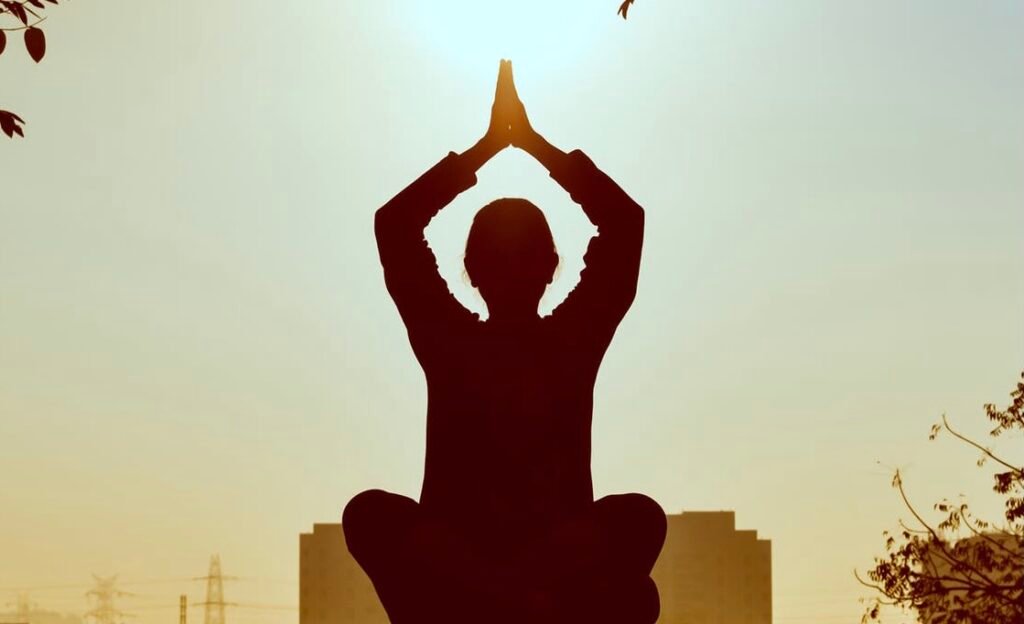Arthritis patients can greatly improve their quality of life by losing weight. Yoga is a safe and effective way to increase physical activity for people with arthritis.

Arthritis can render your bones and joints weak and feeble affecting daily movements and deteriorating quality of life. The degeneration of bones cannot be reversed in this autoimmune condition and will get only worse with time. In arthritis, there is inflammation in one or more joints that often results in symptoms like pain, stiffness and swelling. It happens because our immune system develops a malfunction and start attacking its own tissues in the joints. While arthritis medication can help you manage the condition to a large extent, there are other lifestyle factors that can help with the disease.

Losing weight in arthritis is recommended as it not only helps decrease joint pain but also improve mobility. Overweight arthritis patients are also at increased risk of causing damage to their joints as there is additional pressure on knees. Weight loss is also an effective way to prevent arthritis onset. According to John Hopkins Arthritis Centre, overweight women have nearly four times the risk of knee OA (osteoarthritis) and for overweight men the risk is five times greater. Yoga can prevent worsening of arthritis. According to John Hopkins Arthritis Center, Yoga is a safe and effective way to increase physical activity and also has important mental health benefits. Additionally, Yoga can increase muscle strength, improve flexibility, enhance respiratory endurance, and promote balance. Yoga also helps manage pains and improves stamina.
“Joint inflammation characterises arthritis, which is commonly accompanied by joint discomfort. As one of the rheumatic diseases, arthritis can affect numerous internal body parts in addition to joints, muscles, ligaments, cartilage, and tendons. There are currently more than 100 known forms of arthritis, and that number is steadily rising. The different varieties of arthritis range from those connected to inflammation brought on by an overactive immune system to those connected to cartilage wear and tear like osteoarthritis (such as rheumatoid arthritis),” says Himalayan Siddhaa Akshar, Founder, Akshar Yoga Institutions, Himalaya Yoga Ashrama, World Yoga Organization.
Weight loss through yoga improves mobility and can ease the condition. The most typical signs of arthritis are joint pain, stiffness, and swelling. Excess body weight can put more pressure on your joints and aggravate the problem.
“Yoga asanas in this situation can significantly aid you in extending your range of motion. Yoga asanas give your workouts movement, stretch your muscles, build strength, and enhance flexibility. The asanas listed below should be done slowly, with each pose held for at least ten to fifteen seconds. For a secure and beneficial practise, breathe through your positions while being conscious of your body,” says Akshar elaborating on benefits of Yoga for arthritis patients. The Yoga expert also suggests asanas and pranayama techniques to reduce pain for arthritis patients.
Samasthithi-Tadasana
· Stand with your feet together
· Interlock your fingers and stretch your arms up
· You can gently lift your heels
·: 14pt;”>Vrikshasana or Tree Pose
• Place yourself in Samasthithi to start.
• Raise your left leg off the ground such that your body weight is supported by it.
• Put your right foot on the inside of your raised thigh.
• Position it as closely as possible to your crotch.
• To keep your foot in position, you can support it with your palms.
• Afterwards raise your arms in pranam pose.
Ado Mukhasvansana or Downward Facing Dog
·.”
· Put pressure on your palms and open your shoulder blades while pointing your fingers forward.
· Try to push your heels all the way to the floor. Keep an eye on your big toes.
The Siddha Walk Method
The siddha walk is performed by moving from south to north while tracing a figure eight. Walking in the shape of an 8 along this path from south to north will take 21 minutes. Once you have completed the required number of laps, you must turn and walk for an additional 21 minutes from north to south.The practice of Siddha Walk can be included in your regular practice for its therapeutic benefits. It brings health to your body, calmness to the mind and equips you with self-healing abilities.
Ek Padasana
• Start off with Samastithi.
• As you raise your arms and combine your palms in the Pranam gesture, maintain a straight back.
• As you exhale, slant your upper body forward until it is parallel to the ground.
• Maintain your arms close to your ears.
Slowly raise your right leg up behind you while maintaining its straightness.
• Your right pelvis, upper body, and arms should be straight.
• Fix your gaze at one point to maintain balance.
Dandasana
• As it suits you, take a seat on the floor or a bed.
• Make sure your back is straight.
• Extend your legs in front of you, pointing your toes in the direction of your body; • contract your pelvic, thigh, and calf muscles.
• To support your spine and relax your shoulders, place your palms on the floor next to your hips.
• Take eight to ten deep breaths.
Kapal Bhati Pranayama
• Pick any position to sit in (such as Sukhasan, Ardhapadmasan or Padmasana).
Close your eyes and straighten your back.
• On your knees, place your palms up (in Prapthi Mudra).
• Focus on taking a regular breath in and then expelling quickly, forcefully, and rhythmically.
• By compressing your stomach, you can compel the diaphragm and lungs to release all the air they contain.
• You should immediately inhale as you let your stomach expand.
